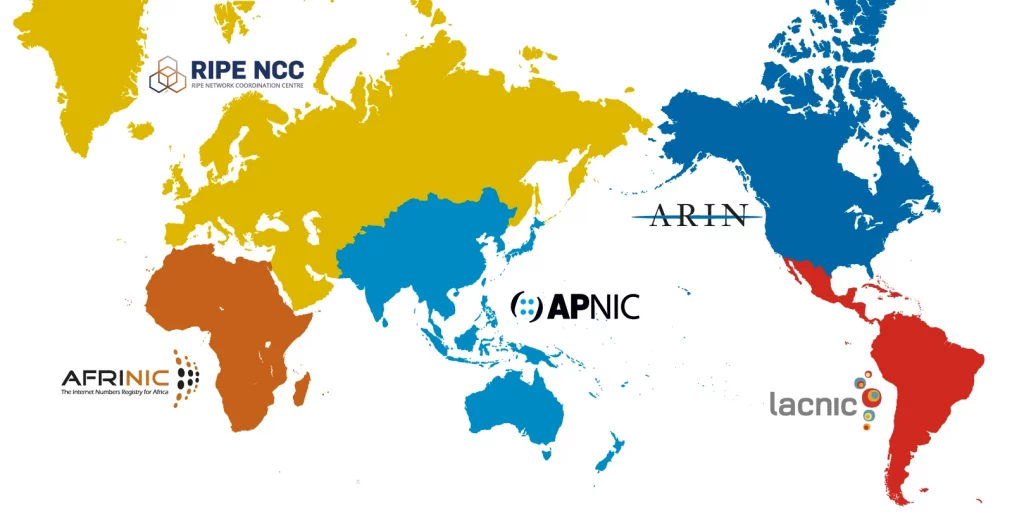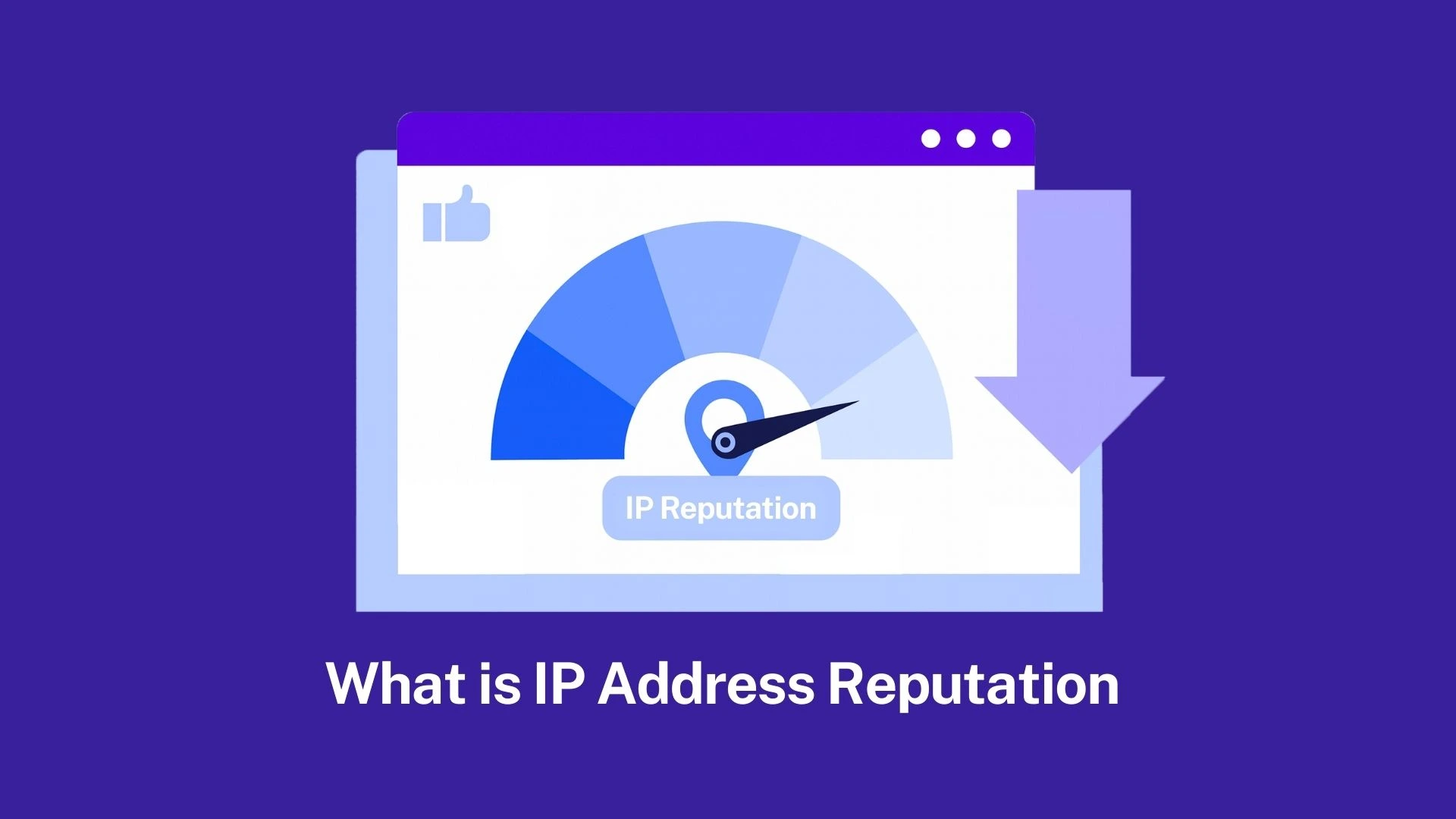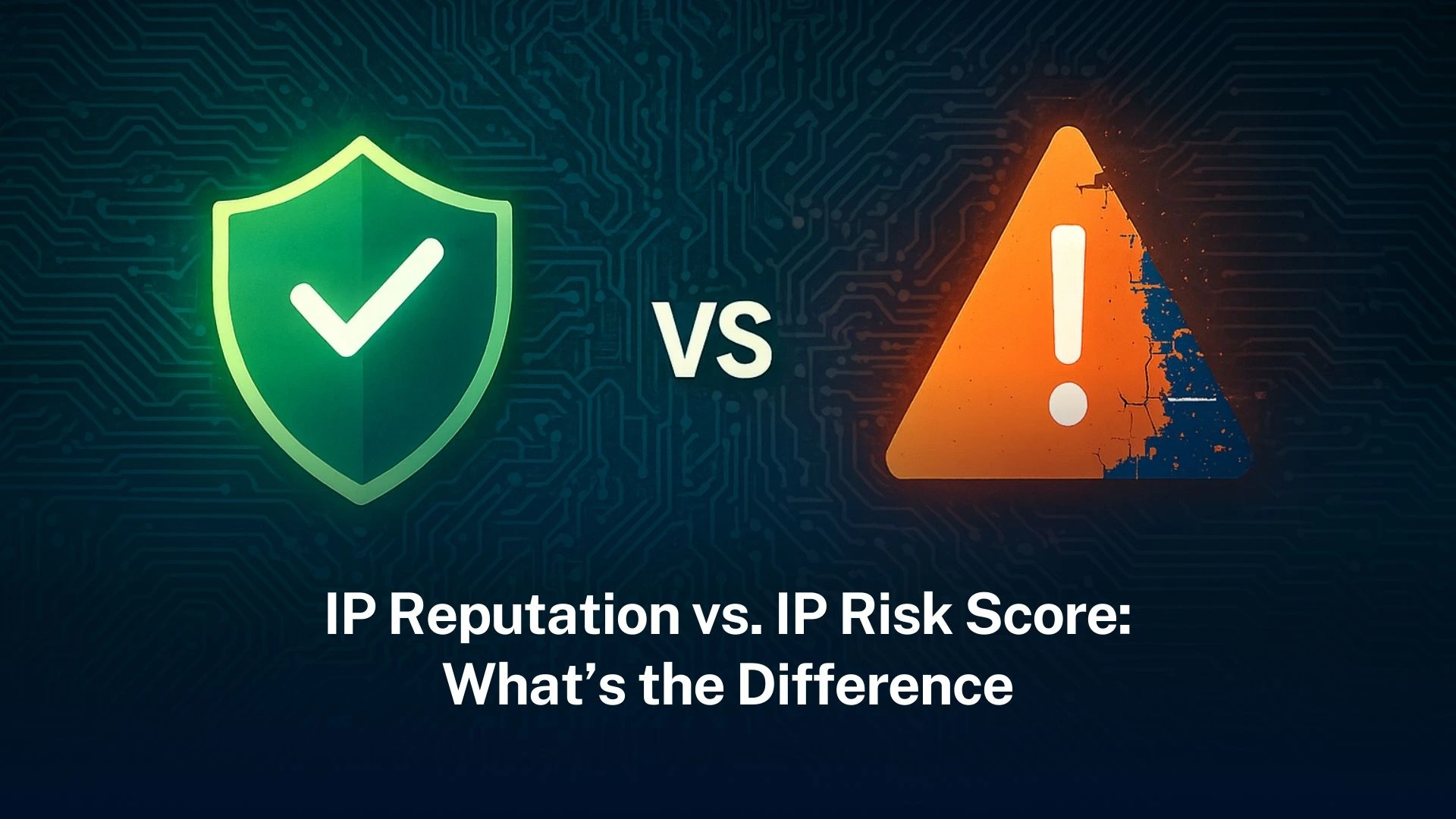How IP address allocation works in ISPs

A simple guide that shows how ISPs get IP addresses and give them to users. It also looks at the steps, the problems, and the rules behind it.
Table of Contents
Toggle- ISPs get IP address blocks from RIRs. They give these to users by using DHCP, fixed IPs, or shared IPs through NAT.
- IANA and the RIRs help control the system. They make sure the addresses are used well and not repeated. This matters more now as IPv4 runs out and IPv6 starts to grow.
Introduction
Once a device is connected to the Internet, it inevitably requires an IP (Internet Protocol) address. It helps data reach the right place. But most people do not think about how they get that address. This process is called IP address allocation.
Internet Service Providers (ISPs) play a big part in this system. They receive blocks of IP addresses from bigger groups and then assign them to homes, businesses, and devices. Because of the rapid growth of the internet, the way these addresses are managed has become more complex.
This article explains how IP address allocation works. It looks at how ISPs get addresses, how they give them to users, and how the whole system is kept in order. It also explores what happens now that older IP address types are running out and how a new version is changing the game.

What is IP address allocation?
IP address allocation means handing out special numbers to devices in a network. These numbers are called IP addresses. Each one lets data go to the right place. All IP addresses are handled by an organization named IANA. IANA is an Internet number allocation agency. It does not give addresses to users. It gives big blocks to five main groups. These are called Regional Internet Registries, or RIRs. Each one looks after a part of the world.
There are five RIRs. ARIN is for North America. RIPE NCC is for Europe and some parts of Asia. APNIC works in the Asia-Pacific region. LACNIC covers Latin America. AFRINIC is for Africa. IANA sends a large group of addresses to each RIR. The RIR then gives smaller parts to internet providers.
These providers are called ISPs. ISP means Internet Service Provider. They give IP addresses to homes, offices, and schools. These users then go online with those addresses. The address they use starts with IANA. Then it moves to the RIR. After that, it goes to the ISP.This way, all addresses stay unique. It also helps groups get what they need. No one gets more than they should.
Role of IANA and regional registries

IANA is the group that looks after all IP addresses in the world. It keeps the full list of available numbers. It breaks this list into big chunks. These chunks are called CIDR blocks. IANA gives these blocks to five large groups. ARIN, RIPE NCC, APNIC, LACNIC and african work all over the world.
ARIN handles North America. RIPE NCC works in Europe and some parts of Central Asia. APNIC covers countries in Asia and the Pacific. LACNIC is responsible for managing Latin America and the Caribbean region. African affairs are the responsibility of AFRINIC.Each group gets blocks from IANA. Then they give out smaller blocks to other groups.
The next step goes to ISPs and smaller registries. These groups give IP addresses to people and companies. The rules for how they give out these addresses are set by the RIRs. They must follow these rules each time they give out IPs.
The number of old-style IP addresses, called IPv4, is almost gone. Most of the blocks have been used. There are very few left. This is why many networks now prepare for IPv6, which has more space.
How ISPs request and receive IP blocks
ISPs need to get IP addresses from a regional internet group. First, they must ask the RIR in their area. They do not just ask. They must also give clear reasons. They need to show why they need the IPs. They must list how many users they have. They must say how they plan to use the addresses.
Most new ISPs start with only a small block. The RIR gives them just enough to begin. This is called a slow-start. The ISP must use most of the block. Then it must show proof of use. After that, it can ask for more. The RIR will check the request again. If the ISP used the last block well, it can get a bigger one next time.
This step-by-step way helps stop waste. It keeps address space from being taken by groups that do not use it. It also helps the RIRs see which networks are growing.
ISP internal assignment methods
DHCP for dynamic addresses
Many internet providers use DHCP to hand out IP addresses. This method is fast. It is also easy to manage. DHCP stands for Dynamic Host Configuration Protocol. It gives out IPs for a short time only.
When a device wants to go online, it sends out a signal. It says it needs an IP address. The server that runs DHCP hears this call. Then it picks an unused IP from a list. It gives this number to the device. The number works for a short time. This time is called a lease.
Once the lease ends, the device must ask again. It might get the same number. It might get a new one. If the user turns off the device, the number can go back into the list. Someone else may get it next. This setup works well for homes and offices. These places do not need the same IP all the time.
Static assignment
Some users do not want their IP address to change. They ask the ISP for a fixed IP. The provider gives them one. This IP stays the same every day.
A fixed IP is helpful for special tasks. One example is when someone runs a server at home or work. Another is when a company uses remote access tools. A static IP helps people find the same device again and again. That is why these users pay extra for it.
NAT for shared addresses
IPv4 addresses are running low. Many ISPs cannot give one public IP to each user. So they use a trick. This trick is called NAT. It stands for Network Address Translation.
NAT lets many people share one public IP. At home, your router does this too. It has one IP on the outside and gives out many private ones inside. The ISP can do the same thing on a larger scale.
When many users go online, NAT changes their private IPs into the same public one. It keeps track of all connections. It makes sure the replies go back to the right user. This works well most of the time. But some apps and services may not like it. Some things need port forwarding or special fixes.
The concept of CIDR and why is it important

Classless inter-domain routing is CIDR. This is an effective means of dividing and managing the IP address space. It replaced the old way, which used fixed groups like Class A, Class B, and Class C. Those groups had set sizes. Some were very large. Some were small. This setup often wasted many addresses.
CIDR does not use fixed sizes. It lets groups use only what they need. An address block in CIDR can be any size. This is written with a “slash” and a number, like /24 or /22. A /24 gives 256 IPs. A /22 gives 1024 IPs. The number shows how many bits are used for the network. Fewer bits mean more IPs in the block.
This makes it easy to give out just the right number of addresses. It also keeps routing tables smaller. Routers do not need to track as many separate blocks. This helps speed up the network.
CIDR also makes it easier for ISPs to handle both small and large customers. They can give small blocks to small users. They can give big blocks to big users. They do not need to waste IPs or split networks in strange ways.
IPv4 exhaustion and its impact
IPv4 is the old type of IP address. It was made long ago. It can hold around 4.3 billion addresses. At the time, this number looked big enough. But the internet grew fast. More people, more devices, and more websites needed IPs.
By the year 2011, all IPv4 addresses had been handed out. IANA gave out the last blocks to the five RIRs. After that, the RIRs slowly gave out the rest to ISPs and other users. Now, almost all IPv4 pools are empty. Some RIRs have a few left, but not many.
Because of this, ISPs cannot get new IPv4 blocks like before. This causes problems. New networks need addresses, but there are not enough to go around. So ISPs must find ways to keep going.
One way is to use NAT. With NAT, many users can share one public IPv4 address. Another way is to start using IPv6. IPv6 has many more addresses, so there is no risk of running out soon. But IPv6 needs extra setup, and not all systems support it yet.
Some ISPs buy IPv4 blocks from others. These deals cost money. Prices for IPv4 addresses keep going up. This adds to the pressure. Many networks now must plan carefully how they use each IP.
Transition to IPv6
IPv6 is the newer type of IP address. It was made because IPv4 does not have enough space. IPv6 uses longer numbers. It can make many more addresses. Each device can get its own.
ISPs started using IPv6. IPv4 was almost used up. But they did not stop using IPv4. Many websites still use IPv4. Some tools only work with IPv4. Some old systems do not support IPv6.Most networks now use both. This is called dual-stack. It means one device gets two addresses. One is IPv4. One is IPv6. If both sides use IPv6, it works. If not, they switch to IPv4.
This setup takes more work. ISPs must handle two sets of rules. They must check both types of addresses. They must test every service again. Some networks still block IPv6. This makes the change slow.New phones and laptops support IPv6. Big websites use it. Some users already run full IPv6. But many still use both types today.
How DNS relates to IP addresses
DNS means Domain Name System. It helps users find websites without using numbers. People type names like google.com or bbc.co.uk. They do not type long strings of numbers. DNS turns the name into an IP address. Then the device can reach the right server.
Each name is linked to one or more IP addresses. DNS servers are used for record storage. Your device will ask the DNS server for the address, look up the name and return the number when you open the website.
Your ISP often runs the DNS servers you use. They check the records and make sure the name points to the right IP. That IP must come from the block of addresses the ISP owns. The ISP gets that block from the regional group. It then gives smaller parts to users or systems.
DNS also helps with email and other services. It points to the right place for each job. If the DNS record is wrong, people cannot reach the service. That is why the ISP must keep the records correct and up to date.
Security and governance
Each RIR watches how IP addresses are used. They ask ISPs and other groups to give usage data. This means they must show how many addresses they use and who uses them. If they do not follow the rules, they cannot get more addresses.
“A secure network is essential to protect against cyber threats, and to ensure the confidentiality and integrity of information... We must take steps to mitigate the most urgent of these pervasive concerns such as Border Gateway Protocol vulnerabilities.”
— Internet Society (ISOC)
RIRs also check for abuse. Some groups try to keep extra addresses without using them. Some try to sell them in secret. These actions break the rules. So the RIR checks the records and runs audits. If something looks wrong, they ask questions. If needed, they can take addresses back.
ISPs must follow clear rules. They must not waste address space. They must give out IPs in fair ways. They must also keep good records and answer checks when asked.
Some people now try new ideas. One idea is to use blockchain. It could track IP address use in a public way. This might help stop cheating. But these systems are still in early tests. Most RIRs still use old systems with strong rules.
Expert quotes
People who work with IP address rules often give advice. They explain how the system works and why rules must be followed.One quote comes from the official guidelines used by Regional Internet Registries:
“New ISPs will receive a minimal amount based on immediate requirement thereafter blocks may be increased based on utilisation verification.”
— Regional Internet Registries
This means a new internet provider gets only a small number of addresses first. They must use most of them before asking for more. The RIR will check if the first block was used well. If it was, they can get more addresses. If not, they must wait.
Another quote comes from a network tools guide at GeoPlugin:
“A hierarchical system assigns IP addresses ensures there’s enough uniqueness and efficient allocation.”
— GeoPlugin
This means the whole system has levels. It starts with IANA, then goes to RIRs, then to ISPs. Each part hands out IPs in order. This setup helps keep every IP different. It also stops confusion. It makes sure people do not get the same address by mistake.
These quotes help explain why the system is strict. Each step keeps the network working in a fair and safe way.
Challenges for ISPs
ISPs face many problems when they manage IP addresses. These problems come from rules, limits, and changes in how the internet works.
Scarcity of IPv4
The first big problem is that IPv4 addresses are almost gone. There are not enough left for new users. So ISPs cannot just ask for more. They must share what they already have. Because of this, many ISPs use NAT. NAT lets many users go online using one public IP. This works, but it is not perfect. It can break some apps. It can make tracing users harder. So it is not the best fix.
Complexity of dual-stack
Another issue is the use of two address types. Most ISPs must run both IPv4 and IPv6 at the same time. This setup is called dual-stack. It sounds simple, but it is not. It means they must run two systems. They must manage two sets of rules. They must test everything twice. This makes the job harder. It also costs more money. Staff must know both systems. Tools must support both. Some customers only want one type. The ISP must handle all of this.
Accurate usage reporting
The last challenge is about keeping good records. RIRs want to know how IP addresses are used. ISPs must track every address. They must show who is using it and when. If they cannot show this, they may not get more IPs. This takes time and effort. It also means ISPs need systems to watch and log all use. Some small ISPs do not have these tools. They must build them or buy them.
Trusted IPv4 Leasing for Business Growth
Get enterprise-grade IPv4 space quickly, with seamless deployment and end-to-end management.
FAQs
Allocation is when RIRs give a block to an ISP. Assignment is when the ISP gives individual IPs to customers.
IPv4 has only ~4.3 billion addresses. Most were allocated by 2011. RIRs exhausted their pools over the next years.
CIDR lets address blocks be any size, like /24 or /20, improving efficiency over old classful system.
It is allowed for multiple users to share one public IP address at NAT. This is very helpful for Internet service providers to use IPv4 addresses.
DHCP is a protocol that automatically assigns IP addresses to devices and accomplishes this process from a pool of IP addresses.
Related Blogs
Standfirst — As IPv4 remains scarce, some nations show particularly strong demand for legacy IP resources. Knowing which helps guide Read more
A clear comprehension of the discrepancies between IP reputation and IP risk score constitutes a critical prerequisite for effective cybersecurity Read more
A clear comprehension of the discrepancies between IP reputation and IP risk score constitutes a critical prerequisite for effective cybersecurity Read more
Standfirst — As IPv4 remains scarce, some nations show particularly strong demand for legacy IP resources. Knowing which helps guide Read more
A clear comprehension of the discrepancies between IP reputation and IP risk score constitutes a critical prerequisite for effective cybersecurity Read more
A clear comprehension of the discrepancies between IP reputation and IP risk score constitutes a critical prerequisite for effective cybersecurity Read more


